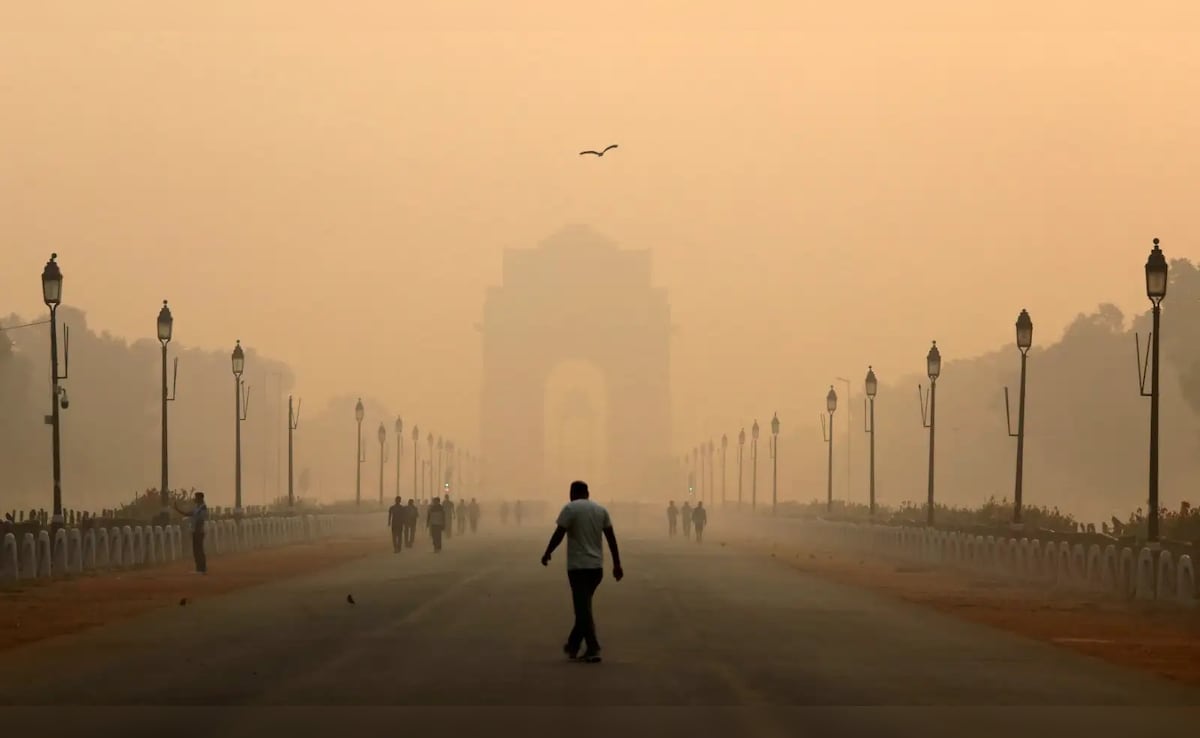
New Delhi:
Violating the ban on firecrackers within the nationwide capital, large-scale fireworks have been set off in Delhi on Diwali night time on Thursday, inflicting clouds of smoke and extreme noise air pollution within the metropolis. Resulting from fireworks, Delhi’s air high quality reached ‘very poor’ class. The air high quality index (AQI) was recorded at 330 at 10 pm.
Final yr on Diwali, the sky was clear and attributable to favorable meteorological circumstances, AQI was recorded at 218. Quite the opposite, this yr on Diwali the air pollution degree within the metropolis once more reached its peak. The state of affairs worsened attributable to hostile climate circumstances, stubble burning and smoke from automobiles.
Nevertheless, the Delhi authorities had constituted 377 enforcement groups to implement the ban on firecrackers and unfold consciousness by means of native associations. Regardless of this, there have been stories of large-scale violation of restrictions in areas of East and West Delhi. The typical AQI of Delhi for the final 24 hours was recorded at 330, which was 307 the day before today.
PM 2.5 is a microscopic particle that may penetrate deep into the respiratory system and trigger well being issues, particularly in kids, the aged and those that have already got respiratory illnesses. To fight rising air pollution, the Delhi authorities has introduced a blanket ban on the manufacture, storage, sale and use of firecrackers within the nationwide capital for the fifth consecutive yr.
On the eve of Diwali, Delhi Atmosphere Minister Gopal Rai had introduced that 377 groups have been shaped to implement the ban on firecrackers within the nationwide capital. He stated that officers are in contact with Resident Welfare Associations (RWAs), market associations and social organizations to unfold consciousness. Police groups have been shaped to make sure that firecrackers are usually not burnt.
Nevertheless, based on stories, restrictions have been broadly violated in East and West Delhi and fireworks lit up the sky in areas like Jaunpur, Punjabi Bagh, Burari and East of Kailash.
The state of affairs in areas round Delhi, together with Noida, Ghaziabad and Gurugram, was comparatively higher and the AQI in these cities was recorded within the ‘poor’ class, whereas the AQI in Faridabad was recorded at 181. However, hostile climate circumstances, vehicular emissions, native air pollution and stubble burning in neighboring states have worsened the smog state of affairs in Delhi-NCR, which is at its peak in winter.
Individuals of Delhi-NCR are pressured to breathe toxic air on Diwali. Poisonous air is inflicting issues not just for the lungs but additionally for a lot of organs together with eyes, ears, coronary heart. Air pollution is proving to be extraordinarily harmful even for many who are already affected by severe illnesses.
Aside from Delhi-NCR, the air high quality index (AQI) was recorded in ‘poor’ and ‘very poor’ class at many locations in Haryana on Diwali night time on Thursday. Together with Punjab, AQI was recorded in ‘poor’ class at many locations within the Union Territory of Chandigarh.
Aside from this, AQI was recorded at 201 in Ambala, 292 in Bahadurgarh, 278 in Bhiwani, 211 in Ballabhgarh, 245 in Faridabad, 270 in Kurukshetra, 202 in Panchkula, 222 in Rohtak and 258 in Sonipat.
In accordance with the information, Chandigarh’s AQI was recorded at 239 at 11 pm on Thursday night time. Equally, in Jalandhar, Punjab, the air high quality index was 256 at 11 pm, whereas it was 234 in Ludhiana, 266 in Mandi Gobindgarh and 244 in Patiala.
In accordance with the dimensions set by the Meteorological Division, AQI between zero to 50 is ‘good’, 51 to 100 is ‘passable’, 101 to 200 is ‘reasonable’, 201 to 300 is ‘poor’, 301 to 400 is ‘very poor’. ‘And 401 to 500 are thought-about ‘extreme’.
(This information has not been edited by NDTV workforce. It’s revealed immediately from the syndicate feed.)
Thanks for taking the time to learn this text! I hope you discovered the knowledge insightful and useful. In the event you loved any such content material, please take into account subscribing to our e-newsletter or becoming a member of our group. We’d like to have you ever! Be at liberty to share this text together with your family and friends, who may additionally discover it fascinating.

Kanishk Singh has always had a keen interest in fast-paced cars. For the past three years, he has been writing about automobiles, but his fascination with cars dates back even further. He thoroughly enjoys learning about their features and expressing his thoughts through his writing. Kanishk also has a profound interest in the stock market, shares, and business strategies. He possesses a wealth of knowledge on these subjects and consistently writes articles on them. Currently, he is working as a writer for Lattestnews24, specifically focusing on the Automobile, Finance, and Business categories. His well-crafted words are highly appreciated by the readers, as they find them both informative and creative.
